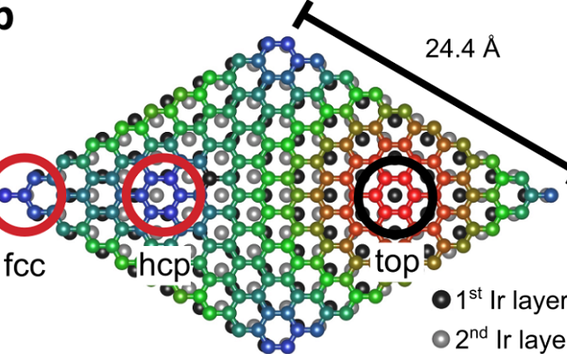CEST publishes article on charge transfer interface

Marc Dvorak and Patrick Rinke, together with experimental collaborators from Peter Liljeroth's group, published their work describing the charge transfer interface of F4-TCNQ on graphene in ACS Nano: http://pubs.acs.org/doi/abs/10.1021/acsnano.7b01599
F4-TCNQ on graphene demonstrates strongly site dependent charging and adsorption. Depending on the adsorption site relative to the underlying Ir substrate, the molecule can either be charged or uncharged. The experimental signature of such selective charging is the appearance (or not) of the so-called Kondo resonance in the electronic spectrum.
But what is the mechanism for such a delicate balance between charged and uncharged molecules? Using density functional theory, our work shows that the unusual adsorption geometry and site-selective charging can be explained by two effects: (1) the balance between van der Waals and charging energies of the molecule and (2) the increased chemical reactivity at certain sites of the Moire pattern. This somewhat surprising result shows that for interfaces with molecular energy levels very close to the Fermi energy, the molecule adsorbs in a non-planar geometry. Charge transfer from the substrate to the molecule is critical for stabilizing such a tilted geometry.
Read more news

Get to know us: Associate Professor Maria Sammalkorpi
Sammalkorpi received her doctorate from Helsinki University of Technology 2004. After her defence, she has worked as a researcher at the Universities of Princeton, Yale and Aalto.
Aalto computer scientists in ICML 2024
Computer scientists in ICML 2024
Getting bacteria into line
Physicists use magnetic fields to manipulate bacterial behaviour